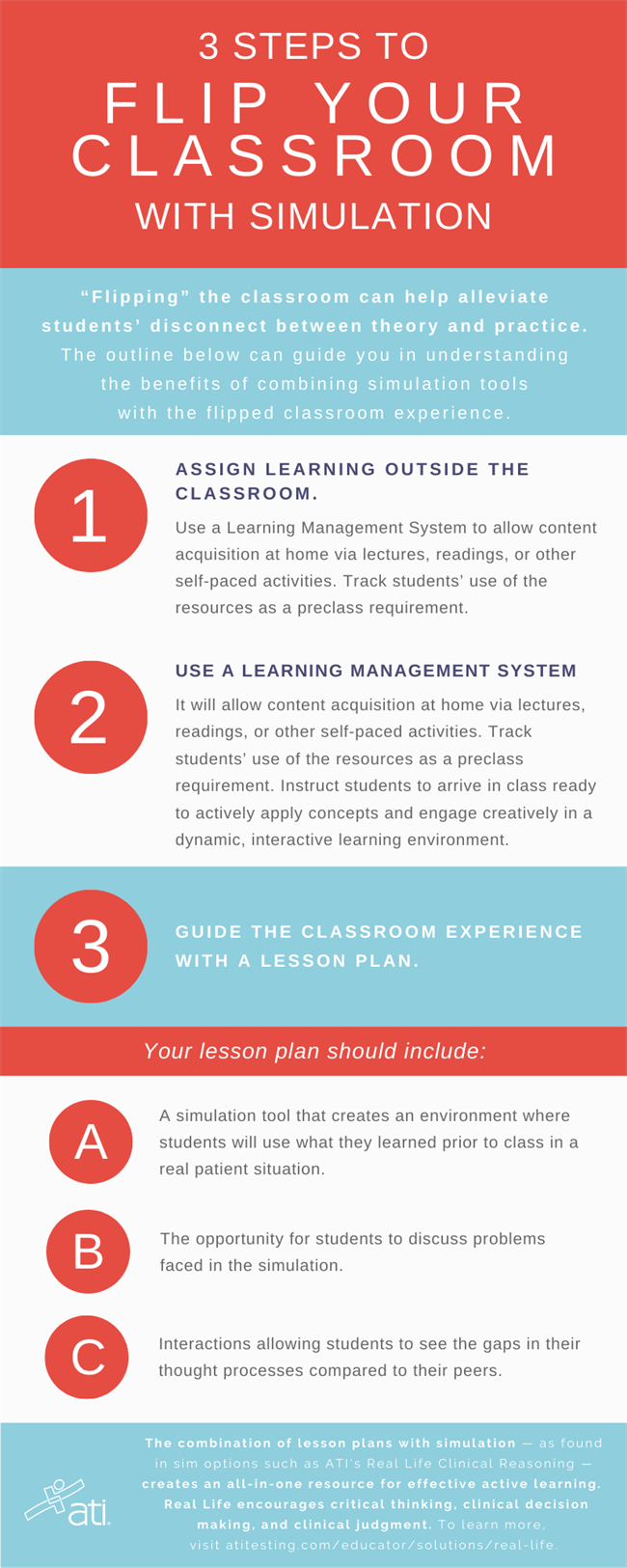3 STEPS TO FLIP YOUR CLASSROOM WITH SIMULATION [INFOGRAPHIC]
Oct 28, 2019, 12:29 PM
<1-min. read time>“Flipping” the classroom can help alleviate students’ disconnect between theory and practice. This outline can guide you in understanding the benefits of combining simulation tools with the flipped classroom experience.

- Assign learning outside the classroom. Use a Learning Management System to allow content acquisition at home via lectures, readings, or other self-paced activities. Track students’ use of the resources as a preclass requirement.
- Set expectations. Instruct students to arrive in class ready to actively apply concepts and engage creatively in a dynamic, interactive learning environment.
- Guide the classroom experience with a lesson plan. Your lesson plan should include:
- A simulation tool that creates an environment where students will use what they learned prior to class in a real patient situation.
- The opportunity for students to discuss problems faced in the simulation.
- Interactions allowing students to see the gaps in their thought processes compared to their peers.
The combination of lesson plans with simulation — as found in sim options such as Real Life Clinical Reasoning — creates an all-in-one resource for effective active learning.
Real Life encourages critical thinking, clinical decision making, and clinical judgment. To learn more, visit the ATI Real Life solutions page.
Read this infographic's related article for more in-depth information: "3 lesson plans for using screen-based simulation."
